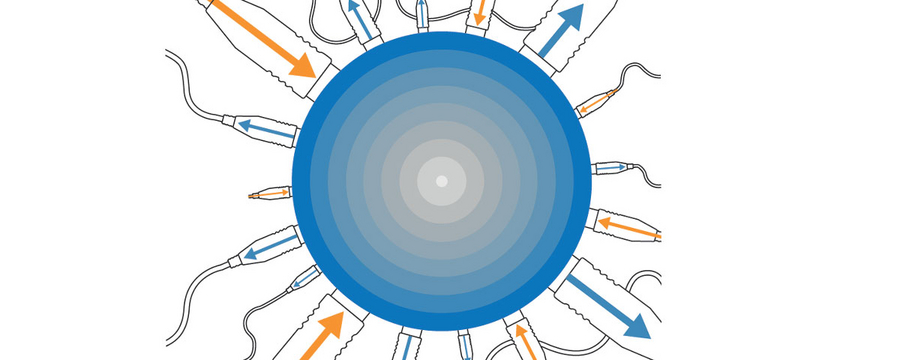
It is well known that the cell nucleus contains an organisms entire genome packaged into chromosomes, which occupy specific territories within the nuclear volume. In addition to chromosomes, “bodies” are additional structures that support nuclear functions like gene expression. Cajal bodies are spherical nuclear structures that are rich in protein and RNA. Their shape depends on the protein coilin, which connects various parts of Cajal bodies together. Yet, how coilin acts to create the and Cajal body structure still remains mysterious.
In the recent issue of Molecular Cell, the Neugebauer Lab used UV crosslinking to identify RNA molecules that bind to coilin. To their surprise several hundred small non-coding RNAs were identified as coilin interactors. Identifying these partner molecules provides a major breakthrough, by showing that coilin manages many molecular inputs and outputs trafficking to and from Cajal bodies. Just as the Frankfurt Airport serves as a Europe-wide central point for airplanes, “Coilin makes Cajal bodies the cellular hubs of small non-coding RNA metabolism,” says Martin Machyna, first author of the study. “Coilin is the air traffic controller.”
Group Leader Karla Neugebauer emphasizes the importance of the work: “It takes new global approaches to define the composition of cellular compartments that are impossible to purify, because they are not enclosed by membranes.”
The work was done when Neugebauer was still with her lab at the MPI-CBG; she has moved on and is now Professor of Molecular Biophysics and Biochemistry at Yale University.
Martin Machyna, Stephanie Kehr, Korinna Straube, Dennis Kappei, Frank Buchholz, Falk Butter, Jernej Ule, Jana Hertel, Peter F. Stadler, Karla M. Neugebauer:
The Coilin Interactome Identifies Hundreds of Small Noncoding RNAs that Traffic through Cajal Bodies
Molecular Cell, 6 November 2014
DOI: 10.1016/j.molcel.2014.10.004